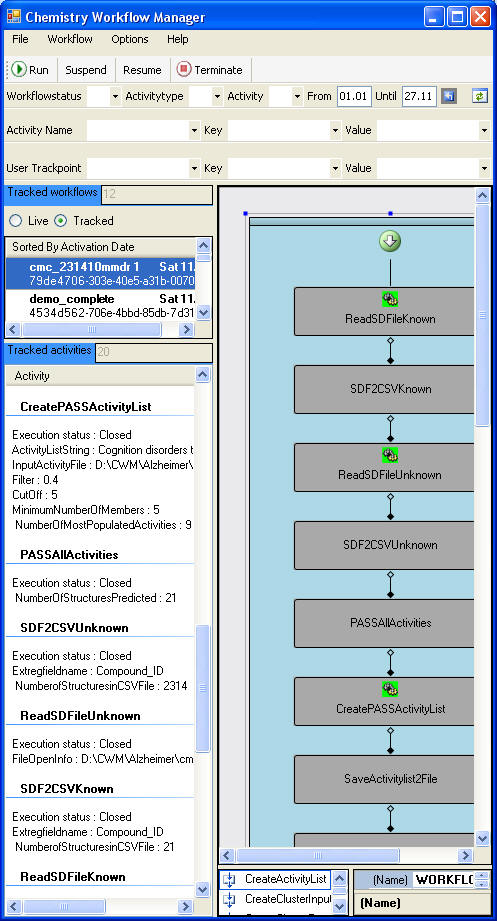Chemistry Workflow Manager (CWM) |
|||||
|
We chemists have a mind-boggling amount of software available to help us in our research tasks. The problem is that for all this software we hardly can do our work in the lab anymore, or is it our work to sit on the computer all day? Let's not go into this discussion, but let's think how we could use the software programs more efficiently. The answer is already given by companies like Accelrys, KNIME, and Inforsense. Instead of learning many programs, let a few gurus select programs and develop workflows, and we chemists push one button to get the results. It might be more than one button that we have to push, and we have to investigate if the programs are suitable for our problem. But, in general most things that we do are part of workflows and many tasks can be automated. Microsoft offers the free-of-charge Windows Workflow Foundation (WF), a framework for quickly building workflow enabled applications. We don't have to worry any more about the framework, but can concentrate on the so called "activities"; the programs that do the tasks, i.e. a program that calculates a logP. (In Pipeline Pilot, activities are called components.) We provide the end-user a GUI (graphical user interface) for execution of the workflow. The user can submit multiple workflows simultaneously. Every executed workflow gets persisted (stored) in a Microsoft SQL Server Express database (free-of-charge database), thus allowing the user to suspend execution of the workflow at any time and allows resuming the workflow at a later point. The central database allows users within project groups to share the work on a given submitted workflow. Every activity in a given workflow is traced in the SQL Server database, thus providing a complete archive log of every executed workflow. Every activity defined in a workflow is a component that can be reused in other workflows. Since the Workflow Foundation is free and fully published a worldwide community is actively working on new activities. This allows to quickly design new workflows respectively add functionality to existing workflows. In comparison to other workflow or pipelining software, we concentrate on providing finished applications. With this application the end user works without having to learn other programs. We do not provide a pipelining tool where you can drop activities to generate your own worksflows. We have developed as application the CWM Lead Finder, the CWM Global Search and work on a CWM Tox Predictor. These are sequential workflows. The user submits a set of data and in return gets a sorted list or a subset. In addition to sequential workflows, Microsoft's Workflow Foundation supports “event driven” workflows, such as the submission of an expense report , or (in chemistry) a compound submission.
We will develop workflow applications on
demand, please contact us at
|
 |
|
|||